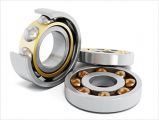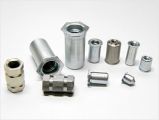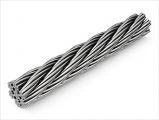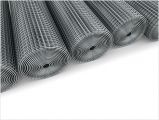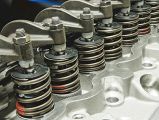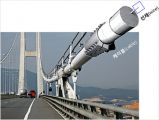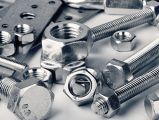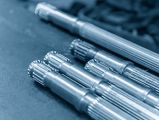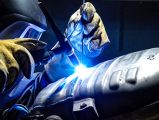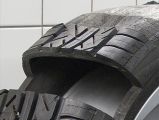Wire Rod
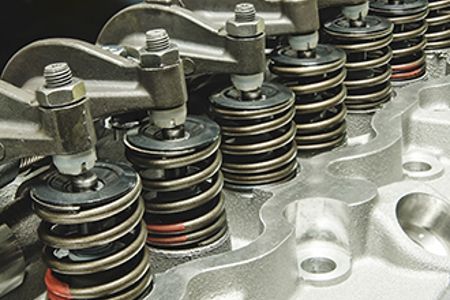
Wire rods are available in the form of coils. The cross-section of the rod ranges from 5.5 to 42 mm. Billets produced from a continuous casting system are rolled, cooled and coiled into the sizes required by the customers.
POSCO uses a state-of-the-art facility and technology to produce wire rods. We use a fully computerized automatic system to deliver products of various dimensions. Wire rods are used for wide applications ranging from motor vehicles to construction, bridges and even basic research efforts.
Product variants
-
Spring Steel
There are two types of wire rods intended for springs: one for vehicle suspensions and the other for engine valves and clutches. Suspension springs provide an improved ride by absorbing and/or mitigating shocks and/or vibrations that the motor vehicle experiences from the surface during a drive and enhance safety by ensuring balance throughout a turn.
The recent demand for high strength suspension springs is increasing as the industry seeks reduced weight and higher fuel efficiency in motor vehicles. For this application, anti-decarburization (reduction of carbon content in steel due to oxidation) and anti-corrosion capabilities are required.
Engine valve springs are used to control fuel and exhaust gas before and after combustion within the engine cylinders. In addition, the clutch spring helps the clutch connect the rotating shaft from the engine to the transmission and disconnect the shaft.
Wire rods for engine valve springs require robust quality inside and out as they are subject to loads repeatedly in a high-temperature and high-speed environment. It is particularly imperative to identify any non-metal inclusion that can damage the spring and thus ensure its surface quality.
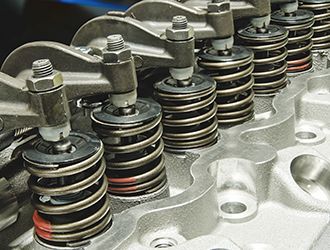
-
Tire Cord Steel
Made by adding elements (Cr, Si, Mn, etc.) to 0.70-0.92 percent high carbon steel for higher strength. This material is drawn into fine wires (0.15-0.38mm) that are subsequently twisted into tire cord (for use as reinforcement to protect tires from external pressure and shock for extended life).
Wire rods for tire cord require sufficient cleanness for drawing and lightness, and high strength for high fuel efficiency. More and more customers require mechanical descaling, instead of pickling, that can eliminate a heat treatment process out of environmental concerns.
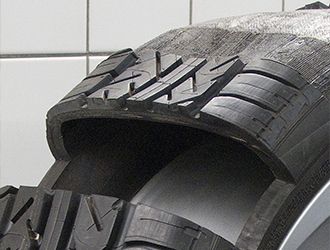
-
Bearing Steel
Bearing steel is used to make a variety of mechanical parts including bolts, nuts and screws by means of hot/cold forging or heading. Major applications include couplings for motor vehicles, bolts used in construction and forged parts for mechanical equipment that require uniform chemical elements and good internal quality.
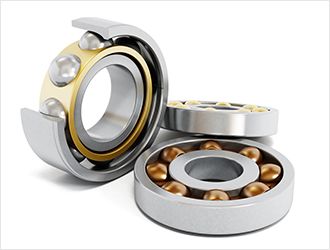
-
Steel for CHQ
CHQ (cold heading quality) wire rods are used to make various mechanical parts including bolts, nuts and screws by means of hot/cold forging or heading. Major applications include couplings for motor vehicles, bolts used in construction and forged parts for mechanical equipment that require uniform chemical elements and good internal quality.
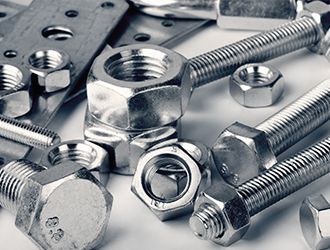
-
High Carbon Steel
As high carbon steel, it requires control of its fine pearlite structure to maintain high strength and achieve good drawability. Its typical applications include wire ropes, precision springs, bead wires and regular PC steel wires.

-
Steel for Bridge Cable
Carbon steel for mechanical structure with a small amount of boron or a large amount of Si is manufactured by processing high-frequency heat in customers.
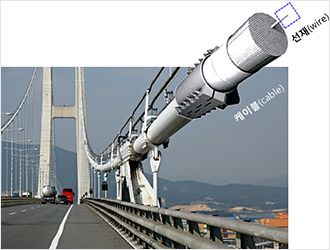
-
High Strength Steel
It is clean steel with a high carbon content featuring high drawability, high strength and good anti-fatigue. It is extensively used for high strength bead wires, PC steel wires and bridge cables.
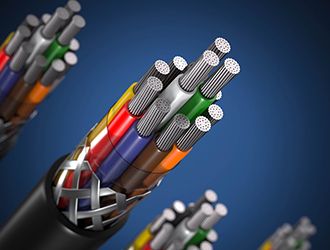
-
Steel for Machine Structure
This is carbon steel largely used for bolts, nuts and other fasteners in mechanical devices or applications for transfer of power, such as shafts.
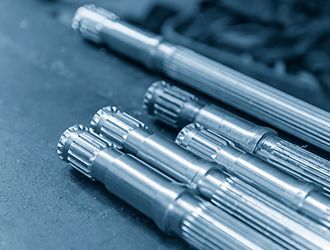
-
Free Cutting Steel
Made by adding phosphorus, sulfur or other free-cutting elements to regular steel for improved machinability. Major applications include precision parts for motor vehicles and electronics, such as printer shafts.
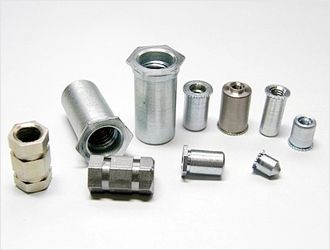
-
Steel for Welding Rod
Gas welding wire rods are used for arc welding, which involves the blocking of the atmosphere using carbon dioxide, argon or similar. Major applications include automotive, shipbuilding and containers. Submerged welding rods are used for arc welding, which involves the spraying of a coating agent through which a wire is inserted.
Major applications include automatic welding of heavy, thick plates in shipbuilding, off-/onshore structures and other sectors. Features required for this material include an ability to be drawn at high speed, good arc stability during automatic welding, optimal element combination for the minimal occurrence of spatter and minimal deviation in tensile strength for uniform feeding. Types of welding where this material is used include gas metal arc welding, submerged welding and shielded metal arc welding.
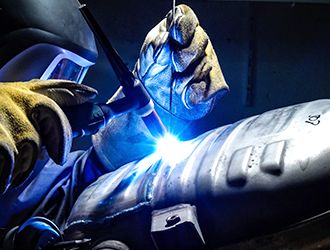
-
Low Carbon Steel
Steel with a carbon content of no greater than 0.22 percent. Mild steel compliant with the POSFIS specifications, in particular, is used for high-quality fine steel wires. Features required for this material include an ability to manage inclusion for fine wire processing and make Si-killed steel as well as exfoliation for mechanical descaling. Major applications include galvanized steel wires, steel fibers, nails, black annealed wires and wire mesh.
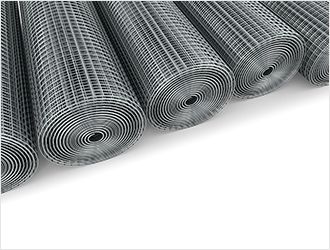
Contact
POSCO
6261, Donghaean-ro,
Nam-gu, Pohang-si,
Gyeongsangbuk-do,
Republic of Korea
Fotogalerie
Translator
Products and technologies
Aerospace
Agriculture
Animals and pet supplies
Automotive
Banking and insurance
Boats and shipping industry
Building and architecture
Business
Education
Electrical industry
Electronics
Engineering
Environment
Finance, taxes and accounting
Flowers and plants
Food and beverage industry
For companies
Forestry and wood processing
Furniture
Gastronomy and hotel industry
Glass, ceramics and porcelain
Healthcare and pharmacy
Hobby and garden
Home and household goods
HR
Hygiene, drugstore and cosmetics
Charity and social responsibility
Chemical
Institution
IT and computers
Law and legislation
Management and certification systems
Minerals
Office
Packaging and packaging technologies
Paper industry
Plastic and rubber industry
Power engineering
PR and marketing
Printing and printing technology
Railway industry
Real estate
Safety, security and protection
Science and research
Social services
Sport and relax
Steel and iron processing
Telecommunications and the internet
Textile and leather industry
Tourism
Toys, games and entertainment
Transport and logistics
Agriculture
Animals and pet supplies
Automotive
Banking and insurance
Boats and shipping industry
Building and architecture
Business
Education
Electrical industry
Electronics
Engineering
Environment
Finance, taxes and accounting
Flowers and plants
Food and beverage industry
For companies
Forestry and wood processing
Furniture
Gastronomy and hotel industry
Glass, ceramics and porcelain
Healthcare and pharmacy
Hobby and garden
Home and household goods
HR
Hygiene, drugstore and cosmetics
Charity and social responsibility
Chemical
Institution
IT and computers
Law and legislation
Management and certification systems
Minerals
Office
Packaging and packaging technologies
Paper industry
Plastic and rubber industry
Power engineering
PR and marketing
Printing and printing technology
Railway industry
Real estate
Safety, security and protection
Science and research
Social services
Sport and relax
Steel and iron processing
Telecommunications and the internet
Textile and leather industry
Tourism
Toys, games and entertainment
Transport and logistics
